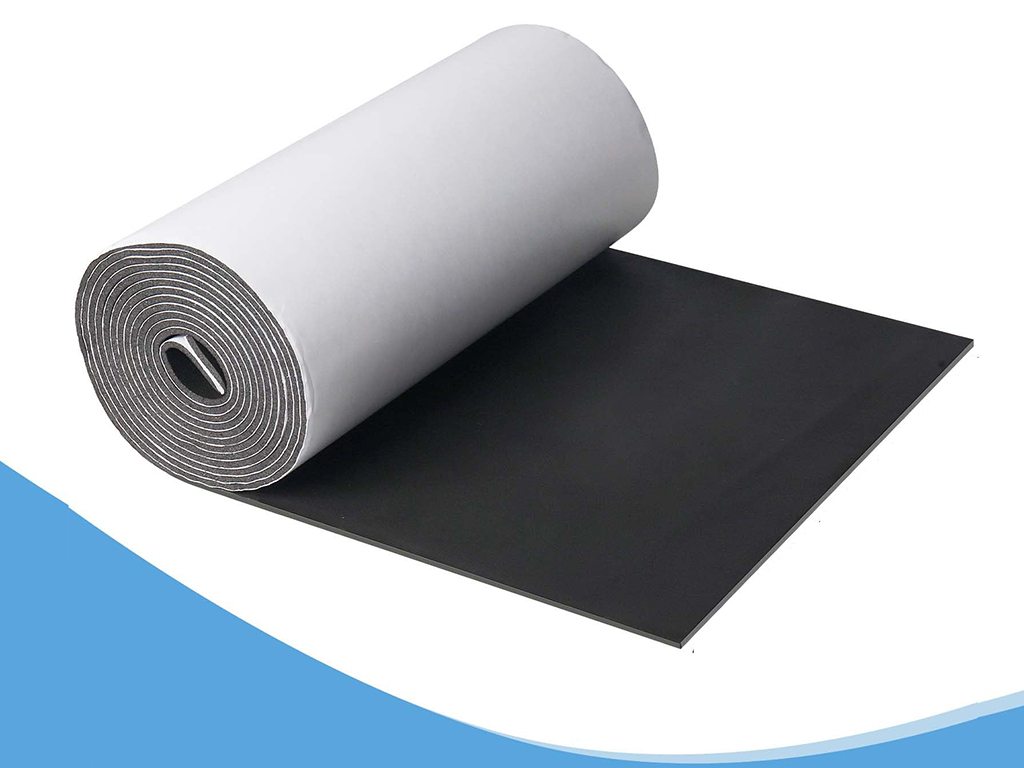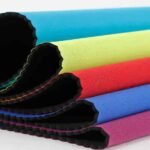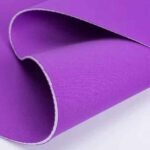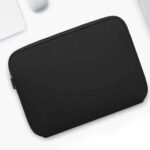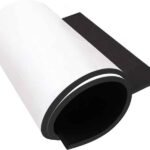Have you ever wondered why neoprene fabric is so prevalent in various industries, from fashion to automotive? When I first encountered neoprene, I was amazed by its versatility and durability. However, understanding its full potential required diving deeper into its properties and applications. In this guide, I’ll explore the multifaceted uses of neoprene fabric, highlighting its strengths and addressing common concerns to help you make informed decisions for your business needs.
Neoprene fabric offers exceptional durability, flexibility, and insulation, making it ideal for numerous applications across different industries.
Imagine developing a product line that stands out in the market for its quality and functionality. Neoprene fabric can be the cornerstone of such a strategy, providing the reliability and versatility needed to meet diverse customer demands.
What Are the Disadvantages of Neoprene?
While neoprene fabric is celebrated for its numerous benefits, it’s essential to consider its drawbacks to make a balanced decision.
Neoprene has some disadvantages, including environmental concerns, limited breathability, and potential discomfort in warmer climates.
Addressing Neoprene’s Limitations
Environmental Impact
Neoprene’s environmental impact is a key concern. It is traditionally made from petroleum-based products, raising sustainability concerns. Its production process involves significant energy consumption and the release of greenhouse gases, contributing to environmental degradation.
Breathability Issues
Neoprene’s dense structure can limit airflow, making it less breathable compared to other fabrics. This can lead to discomfort during extended use, especially in warmer environments or during high-activity levels.
Weight and Bulkiness
Depending on its thickness, neoprene can be relatively heavy and bulky. This might not be ideal for products requiring lightweight materials, potentially limiting its use in certain applications.
Cost Considerations
High-quality neoprene can be more expensive than alternative materials. For businesses operating on tight budgets, the initial investment in neoprene products might be a barrier.
By understanding these disadvantages, you can better assess whether neoprene is the right choice for your specific needs or if alternative materials might be more suitable.
What Is the Main Use of Neoprene?
Neoprene’s unique properties make it indispensable in several key industries, each leveraging its strengths to enhance their products.
The main use of neoprene is in creating insulated and durable products such as wetsuits, laptop sleeves, and automotive components.
Core Applications of Neoprene
Wetsuits and Diving Gear
Neoprene’s excellent thermal insulation and flexibility make it the material of choice for wetsuits, ensuring comfort and protection in cold water environments.
Technology Accessories
From laptop sleeves to phone cases, neoprene provides a protective barrier against scratches, impacts, and moisture, safeguarding valuable electronics.
Automotive Components
Neoprene is used in automotive parts like gaskets, hoses, and vibration dampeners due to its resistance to oil, chemicals, and temperature variations, enhancing vehicle performance and longevity.
Fashion and Accessories
In the fashion industry, neoprene is utilized to create stylish yet functional items such as handbags, wallets, and belts, combining aesthetics with practicality.
Understanding these primary uses can help you identify how neoprene can be integrated into your product offerings to meet market demands effectively.
Is Neoprene Environmentally Friendly?
Sustainability is a growing concern, and the environmental impact of materials like neoprene is increasingly scrutinized.
Neoprene fabric has both environmentally friendly and challenging aspects, depending on its production and disposal methods.
Evaluating Neoprene’s Sustainability
Traditional Neoprene Production
Traditional neoprene is derived from petroleum, making it a non-renewable resource with a significant carbon footprint. The production process involves harmful chemicals, contributing to pollution and environmental harm.
Eco-Friendly Alternatives
Recent advancements have led to the development of eco-friendly neoprene alternatives made from renewable resources such as plant oils. These alternatives reduce reliance on fossil fuels and lower greenhouse gas emissions, making neoprene more sustainable.
Recyclability Efforts
Neoprene is not as easily recyclable as some other materials. However, initiatives are underway to improve recycling technologies, enabling better end-of-life management and reducing landfill waste.
End-of-Life Solutions
Proper disposal and recycling are crucial for minimizing neoprene’s environmental impact. Encouraging recycling programs and developing closed-loop systems can help mitigate its ecological footprint.
While traditional neoprene poses environmental challenges, the shift towards more sustainable production methods and recycling efforts are paving the way for a greener future for this versatile fabric.
What Does Neoprene Fabric Do?
Neoprene fabric performs a variety of functions that make it indispensable in many applications, thanks to its unique properties.
Neoprene fabric provides insulation, protection, and flexibility, making it suitable for diverse uses such as thermal clothing, protective gear, and durable accessories.
Functional Benefits of Neoprene
Insulation and Thermal Protection
Neoprene’s ability to trap air and provide thermal insulation makes it ideal for products that need to maintain temperature, such as wetsuits and laptop sleeves.
Durability and Protection
Neoprene is resistant to abrasion, chemicals, and weather conditions, ensuring that products like automotive components and protective gear last longer and perform reliably under harsh conditions.
Flexibility and Comfort
Despite its toughness, neoprene remains flexible and comfortable, allowing for ease of movement in applications like sports gear and wearable technology.
Water Resistance
Neoprene’s inherent water-resistant properties make it perfect for products exposed to moisture, ensuring that items like bags and electronics remain dry and protected.
By understanding what neoprene fabric does, you can better utilize its strengths to enhance your product designs and meet customer expectations.
How Is Neoprene Fabric Used in Different Products?
Neoprene’s versatility allows it to be integrated into a wide range of products, each benefiting from its unique characteristics.
Neoprene fabric is used in products such as wetsuits, technology accessories, automotive parts, medical supports, and fashion items, each leveraging its durability and flexibility.
Product-Specific Utilizations of Neoprene
Wetsuits and Water Sports Gear
Neoprene’s thermal insulation and flexibility make it essential for wetsuits, gloves, boots, and hoods, providing comfort and protection for water enthusiasts.
Technology Accessories
Laptop sleeves, phone cases, and tablet covers made from neoprene protect electronic devices from scratches, impacts, and moisture, ensuring longevity and functionality.
Automotive Parts
Neoprene is used in making gaskets, hoses, and vibration dampeners that enhance vehicle performance by providing reliable resistance to oil, chemicals, and temperature fluctuations.
Medical Supports
In the medical field, neoprene is utilized in braces, supports, and compression garments, offering cushioning and stability to aid in injury recovery and pain management.
Fashion Accessories
Neoprene is incorporated into stylish yet practical items like handbags, wallets, and belts, combining aesthetic appeal with durability and functionality.
By exploring how neoprene fabric is used in different products, you can identify new opportunities for innovation and expansion in your product offerings.
Do Neoprene Fabrics Offer Unique Advantages Over Other Materials?
When compared to alternative materials, neoprene stands out for its distinct benefits that cater to specific needs across various industries.
Neoprene fabrics offer superior insulation, flexibility, durability, and water resistance compared to other materials, making them ideal for demanding applications.
Neoprene vs. Alternative Materials
Insulation and Thermal Properties
Unlike materials like polyester or cotton, neoprene provides excellent thermal insulation, making it superior for products that need to maintain temperature, such as wetsuits and laptop sleeves.
Durability and Resistance
Neoprene is more resistant to wear, tear, and environmental factors like UV rays and moisture compared to fabrics like nylon or spandex. This makes it a better choice for outdoor and automotive applications where longevity is crucial.
Flexibility and Comfort
While materials like leather offer durability, they lack the flexibility that neoprene provides. Neoprene allows for greater movement and comfort, essential for active wear and sports equipment.
Water Resistance
Neoprene’s inherent water-resistant properties surpass those of materials like cotton or denim, making it ideal for water-related products and accessories that need to stay dry and protected.
Customization and Aesthetics
Neoprene can be easily molded into various shapes and customized with colors and patterns, offering both functional and aesthetic advantages over less versatile materials.
By recognizing these unique advantages, businesses can leverage neoprene to create products that outperform those made from alternative materials, meeting higher standards of quality and functionality.
Conclusion and Call to Action
Neoprene fabric is a remarkable material that offers a blend of durability, flexibility, and insulation, making it invaluable across various industries. From enhancing the performance of wetsuits and automotive components to adding a stylish touch to fashion accessories, neoprene’s versatility is unmatched. Additionally, with the advent of sustainable neoprene options, businesses can now enjoy the benefits of this material while minimizing environmental impact.
At Szoneier, we specialize in manufacturing high-quality neoprene fabric tailored to your specific needs. With years of experience and a commitment to excellence, we provide customizable solutions that help your brand stand out. Whether you’re a brand owner, wholesaler, or retailer, our advanced production capabilities and flexible customization options ensure that you receive the best products to meet your market demands.
Ready to elevate your product offerings with premium neoprene fabric? Contact me, Eric, at info@neoprene-bag.com or visit our website www.neoprene-bag.com to request a quote and start a successful collaboration today.

